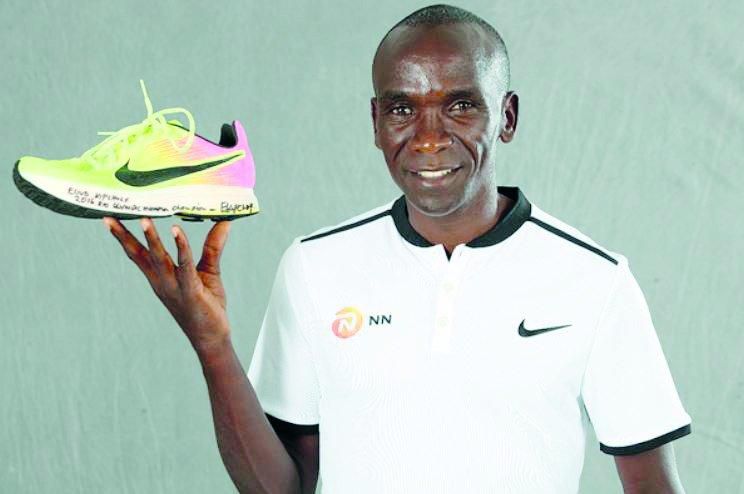Kipchoge saga: World Athletics announces new shoe sole regulation for athletes
)
After Eliud Kipchoge was accused of having an unfair advantage due to his shoes, World Athletics have decided to set new shoe rules.
The sole thicknesses for all athletic shoes in track and field events will be simplified to a stack height of 20mm from November 1, 2024, World Athletics said on Thursday.
Nike's Air Zoom Alphafly NEXT%, a version of the prototype Kipchoge wore when he ran a marathon in 1:59:40 in Vienna last October, was said to provide a 4% boost in running economy compared with other top racing shoes.
Current regulations allow for shoes to have maximum thickness between 20-25mm depending on the event while it can go up to 40mm for road races.

World Athletics said the timeline was agreed to give shoe manufacturers enough notice after they had made "significant investment" in shoes with a sole thickness between 20-25mm.
"There has been an enormous amount of background work and meetings held both internally and externally on our shoe rules since the inception of the Working Group on Athletic Shoes in June 2020," World Athletics' Chief Executive Jon Ridgeon said.
"There is still more to do but I would like to thank the Working Group, the World Federation of the Sporting Goods Industry and the shoe companies for their openness and collaboration in finding solutions."
Shoe technology has been in the spotlight since records started to tumble, with the governing body trying to draw a line between innovation and giving athletes an unfair advantage.

Athletes wearing Nike Vaporflys , which debuted during the 2016 Olympics, dominated the marathon that year, and then every major long-distance road race thereafter.
Studies have shown the Vaporfly's combination of carbon fiber and foam confers about 4% more energetic efficiency , which allows long-distance runners of Kipchoge's caliber to shave three minutes or more off their marathon times .
But when asked about critics who say Vaporfly technology confers an unfair advantage, Kipchoge's answer was unequivocal: It's the runner, not the shoe, that determines performance, he said.
"Even if the shoes are on, and you are not fit enough to run, then you cannot perform," Kipchoge told journalists ahead of the premiere of his documentary "Kipchoge: The Last Milestone."

"Many, many people are assessing the shoes, but they are still performing the same. So the bottom line is they need to train more than they are training now if they are underperforming," Kipchoge concluded.
)
)
)
)
)
)
)
)
)
)
)
)
)
)
)
)